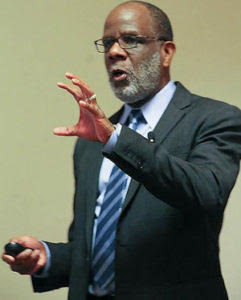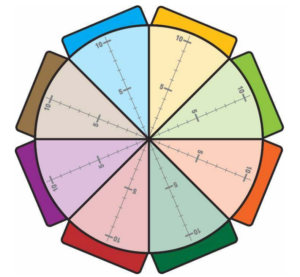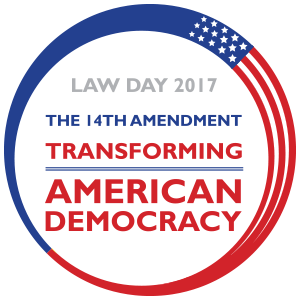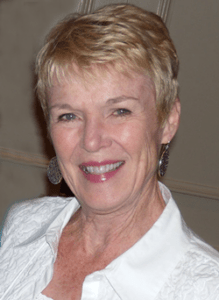By Jennifer Wildeman, Education Projects Specialist, Arizona
As technology plays an increasingly significant role in our society, it has become commonplace in the courtroom. New technological practices and discoveries bring forensic science topics such as DNA, latent print examinations, and digital evidence to the forefront of our court system. With technology playing a greater and greater role in resolving cases, it became obvious to Arizona judicial educators that many judges lack the educational background needed for a sufficient understanding of the scientific principles behind the forensic evidence they see in court.
Similarly, the majority of scientists lack an adequate understanding of the legal tenets that guide our criminal justice system and have difficulty presenting scientific information to judges. In short, “lawyers do not understand science, and scientists do not understand the law” (Chezem in Dawson, 2016). As such, the Arizona Judicial Education Services Division identified a need to address judges’ knowledge gap in the area of forensic science. Guided by the strategic agenda set forth by Arizona Chief Justice Scott Bales, judicial educators developed a multi-faceted plan for crafting a judicial forensic science education program.
First, judicial educators organized a workgroup composed of judges, scientists, and attorneys who worked together to identify ways that forensic science education could be delivered to Arizona judges. Working with the Arizona Supreme Court AOC Education Services Division, this workgroup identified three educational approaches: a multi-day conference focused specifically on forensic science topics, the addition of forensic science sessions in the training program for all new Arizona judges, and the creation of a forensic science resource webpage that judges can refer to on an as-needed basis.
The workgroup focused initially on the forensic science conference.
To identify topics of greatest need among our judiciary, the workgroup conducted a statewide needs assessment. The results obtained from the assessment served as a guide in creating an agenda that included topics such as: forensic biology and DNA, latent print examinations, ballistic comparisons, toxicology, and the role of judge as gatekeeper. At the conference, both local and national experts addressed these topics. For example, a law school professor provided the background for the topic of forensic science in general, a scientist from the National Institute of Standards and Technology (NIST) spoke to the future of forensic sciences, and local law enforcement and crime lab personnel addressed issues local to the state of Arizona.
Over one-quarter of Arizona judges attended the inaugural judicial forensic science conference. Education Services received overwhelmingly positive feedback. Evaluation comments such as “good legal information…useful and practical” and “interesting and informative” indicate that participants found the topics to be relevant and useful for understanding evidence and testimony in the courtroom. In addition to positive evaluation comments, workgroup members received informal feedback suggesting that judges widely support future forensic science training opportunities.
Next, the workgroup focused on including forensic science sessions during mandatory training programs for new judges. These sessions provide an overview of the forensic science challenges judges can expect to see in their courtrooms. In addition to providing in-class instruction, we partner with local forensic scientists to provide our judges with an on-site tour of our local crime laboratory, in order to give judges the opportunity to see first-hand what a crime lab looks like, learn about the capabilities of the lab itself, and speak with the scientists who work there.
During the crime lab tour, judges hear presentations from several different units of the lab, including: crime scene response, forensic biology/DNA, firearms examination, controlled substances, toxicology, and latent print examinations. The tour offers a unique opportunity for experiential learning, since the judges not only view demonstrations, but actually use some of the laboratory equipment themselves. The judges enjoy having the chance to see the lab and speak with scientists. Following our first crime lab tour, one judge commented “I am so grateful for this tour. I think it is a valuable addition to new judge orientation.” Overall, the tour has proven to be a successful way to provide another opportunity for our judges to learn about forensic science.
Finally, the workgroup tackled the creation of a forensic science reference webpage. The group wanted judges to have access to a single repository of forensic science information including articles, websites, legal opinions, and reports. Given that the field of forensic science is rapidly changing, the group urged the creation of a dynamic webpage that can be updated on a continual basis, instead of a static bench book updated only periodically. The webpage is currently under construction and will be managed by an AOC Education Services staff member, who will work closely with judges to maintain current information and update the webpage as needed.
While challenges to providing effective judicial forensic science education still exist, this multi-faceted approach provides a foundation for future training opportunities. Utilizing a variety of training methods ensures that judges throughout the state have access to information on these important topics in a timely manner. This combination of in-person and online training provides flexibility to adapt as scientific understanding changes over time.
REFERENCES
Dawson, Jim. “Forensic Science: A Time of Transformation.” National Institute of Justice. Issue Number 277. September 2016. https://www.nij.gov/journals/277/pages/forensics.aspx (February 1, 2017).
 Jennifer Wildeman has been with the Arizona Supreme Court’s Education Services Division since 2014. She has worked with Arizona courts since 2007, and has been a NASJE member since 2015. As an Education Projects Specialist, Jennifer works closely with subject matter experts throughout Arizona to help develop timely and relevant trainings for judges and court staff throughout the state. In addition, Jennifer trains court staff on topics ranging from communication to legal authorities.
Jennifer Wildeman has been with the Arizona Supreme Court’s Education Services Division since 2014. She has worked with Arizona courts since 2007, and has been a NASJE member since 2015. As an Education Projects Specialist, Jennifer works closely with subject matter experts throughout Arizona to help develop timely and relevant trainings for judges and court staff throughout the state. In addition, Jennifer trains court staff on topics ranging from communication to legal authorities.

 Jennifer Wildeman has been with the Arizona Supreme Court’s Education Services Division since 2014. She has worked with Arizona courts since 2007, and has been a NASJE member since 2015. As an Education Projects Specialist, Jennifer works closely with subject matter experts throughout Arizona to help develop timely and relevant trainings for judges and court staff throughout the state. In addition, Jennifer trains court staff on topics ranging from communication to legal authorities.
Jennifer Wildeman has been with the Arizona Supreme Court’s Education Services Division since 2014. She has worked with Arizona courts since 2007, and has been a NASJE member since 2015. As an Education Projects Specialist, Jennifer works closely with subject matter experts throughout Arizona to help develop timely and relevant trainings for judges and court staff throughout the state. In addition, Jennifer trains court staff on topics ranging from communication to legal authorities. Rob Godfrey is Conference Coordinator for the Utah Administrative Office of the Courts in Salt Lake City.
Rob Godfrey is Conference Coordinator for the Utah Administrative Office of the Courts in Salt Lake City. r programming combat the effects of working with and around traumatic events? Join NASJE’s latest Article Club Callinar (not to be confused with a webinar), where you will have the opportunity to discuss the article about vicarious trauma experienced by court employees. We have also two self-care inventories examples that you can take prior to the callinar or whenever you like.
r programming combat the effects of working with and around traumatic events? Join NASJE’s latest Article Club Callinar (not to be confused with a webinar), where you will have the opportunity to discuss the article about vicarious trauma experienced by court employees. We have also two self-care inventories examples that you can take prior to the callinar or whenever you like.  Law Day is held every year on May 1 for the purpose of celebrating the role of law in our society and to cultivate a deeper understanding of the legal profession. This year’s theme is “The 14th Amendment: Transforming American Democracy.” ABA President Linda Klein’s
Law Day is held every year on May 1 for the purpose of celebrating the role of law in our society and to cultivate a deeper understanding of the legal profession. This year’s theme is “The 14th Amendment: Transforming American Democracy.” ABA President Linda Klein’s 